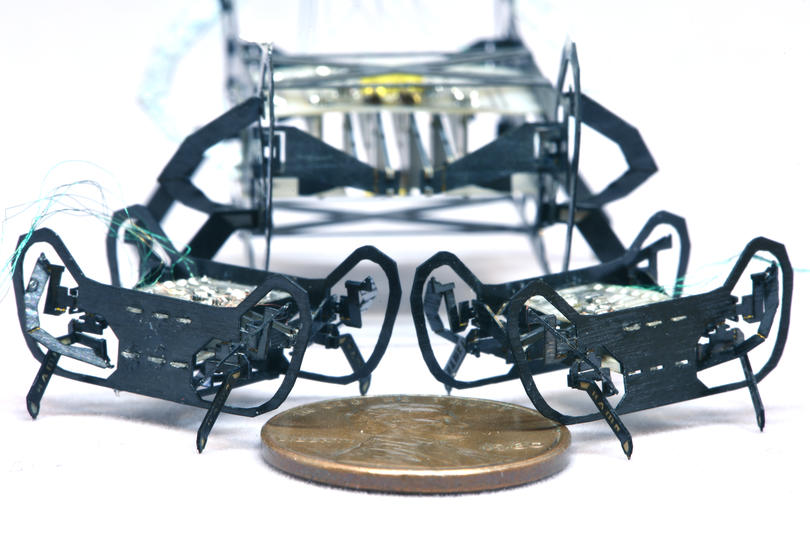Jun 4 2020
HAMR-JR, a minuscule robot developed by researchers from the Harvard John A. Paulson School of Engineering and Applied Sciences (SEAS) and the Harvard Wyss Institute for Biologically Inspired Engineering, cannot climb up the waterspout.
 HAMR-Jr is only slightly bigger in length and width than a penny, making it one of the smallest yet highly capable, high-speed insect-scale robots. Image Credit: Kaushik Jayaram/Harvard SEAS.
HAMR-Jr is only slightly bigger in length and width than a penny, making it one of the smallest yet highly capable, high-speed insect-scale robots. Image Credit: Kaushik Jayaram/Harvard SEAS.
Yet, this microrobot, which is a half-scale model of the cockroach-inspired Harvard Ambulatory Microrobot or HAMR, can jump, run, turn on a dime, and carry heavy payloads.
The HAMR-JR robot is about the size of a penny and can carry out nearly all the performed by its larger-scale predecessor, making it one of the most dexterous microrobots developed so far.
Most robots at this scale are pretty simple and only demonstrate basic mobility. We have shown that you don’t have to compromise dexterity or control for size.
Kaushik Jayaram, Study First Author and Assistant Professor, University of Colorado, Boulder
Jayaram is also a former postdoctoral fellow at SEAS and Wyss. The study was virtually presented this week at the International Conference on Robotics and Automation (ICRA 2020).
One of the major questions that this study focused on was whether or not the pop-up production process used to develop the earlier versions of HAMR and other microbots, such as the RoboBee, could be employed to build robots at several scales—right from small surgical bots to large-scale industrial robots.
PC-MEMS (brief for printed circuit microelectromechanical systems) is a fabrication technique where the components of the robot are etched into a 2D sheet and then popped out in its 3D structure.
To develop HAMR-JR, the team easily shrunk the robot’s 2D sheet design—along with onboard circuitry and the actuators—to rebuild a smaller robot with all similar functionalities.
The wonderful part about this exercise is that we did not have to change anything about the previous design. We proved that this process can be applied to basically any device at a variety of sizes.
Kaushik Jayaram, Study First Author and Assistant Professor, University of Colorado, Boulder
The HAMR-JR microrobot has been built with a body length of 2.25 cm and a weight of approximately 0.3 g—a fraction of the weight of a penny. It exhibits the ability to run nearly 14 body lengths per second, which not just makes it one of the smallest but also one of the quickest microrobots.
A few principles that control properties such as joint stiffness and stride length are altered by scaling down. Therefore, the team also designed a model that can estimate locomotion metrics including payload, foot forces, and running speeds depending on a target size. Then, the model can be employed to develop a system with the necessary specifications.
This new robot demonstrates that we have a good grasp on the theoretical and practical aspects of scaling down complex robots using our folding-based assembly approach.
Robert Wood, Study Co-Author and Charles River Professor of Engineering and Applied Sciences, Harvard SEAS
Wood is also a core faculty member at the Harvard Wyss Institute for Biologically Inspired Engineering.
This study was co-authored by Jennifer Shum, Samantha Castellanos, and E. Farrell Helbling. The study was financially supported by DARPA and the Wyss Institute.
HAMR-Jr: small and dextrous. Presented at ICRA 2020
Video Credit: Harvard John A. Paulson School of Engineering and Applied Sciences.